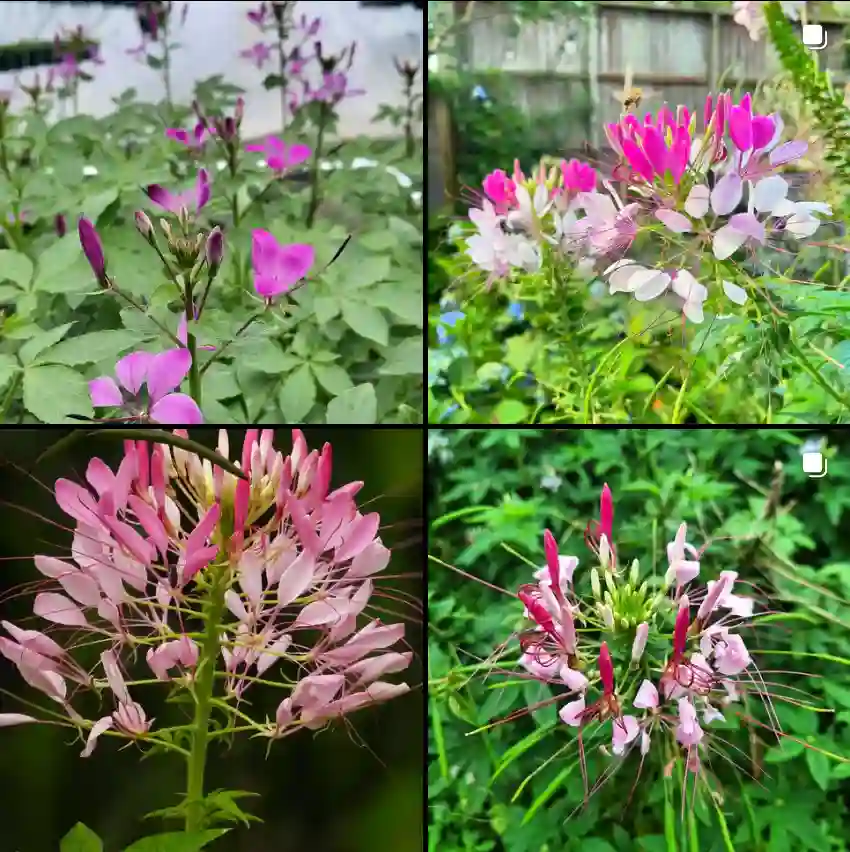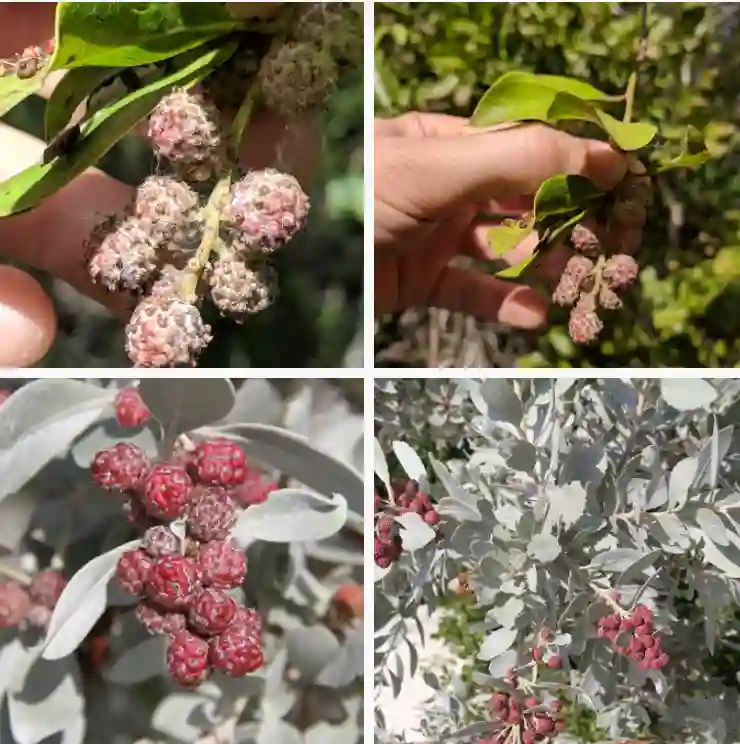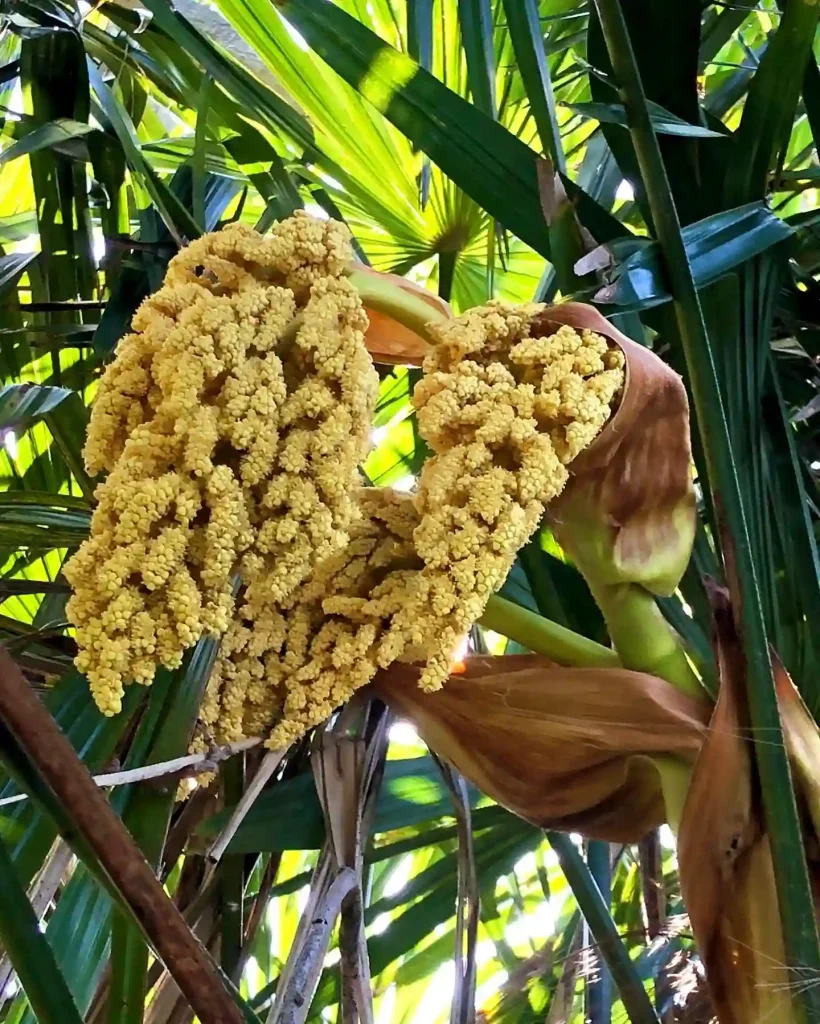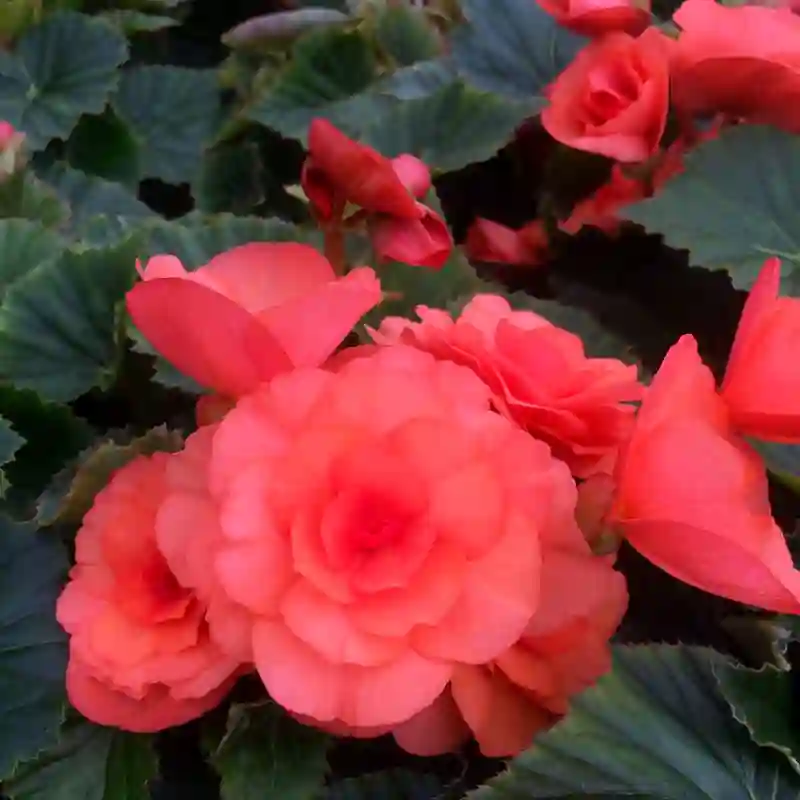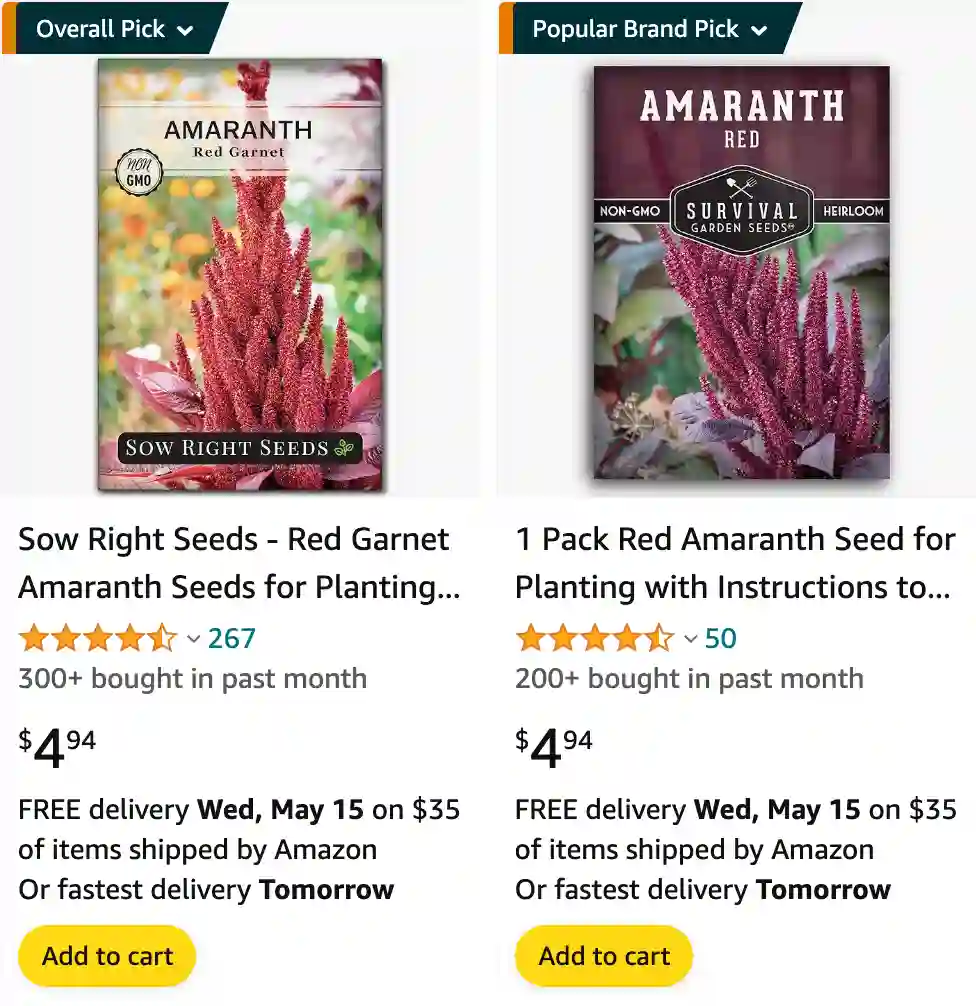
Amaranthus – A Colorful and Nutritious Treasure
I’ve always been captivated by the vibrancy and versatility of plants, and one plant that stands out in my gardening journey is Amaranthus from Amaranthaceae family, commonly known as amaranth. This genus holds a special place in my heart because it combines stunning aesthetics with remarkable utility. Growing and appreciating amaranth has been an enlightening experience, offering lessons in cultivation, sustainability, and nutrition.
Discovering Amaranthus
My introduction to amaranth came through its reputation as a resilient and nutritious plant. Known for its dual purpose as an ornamental and edible species, Amaranthus is a staple in gardens worldwide. The genus comprises around 100 species, ranging from leafy vegetables to grain-producing varieties and ornamental cultivars.
- Amaranthus acanthobracteatus Henrard
- Amaranthus acanthochiton J.D.Sauer
- Amaranthus acutilobus Uline & W.L.Bray
- Amaranthus albus L. Plant FAQs: Amaranthus Albus
- Amaranthus arenicola I.M.Johnst.
- Amaranthus asplundii Thell.
- Amaranthus atropurpureus Roxb.
- Amaranthus aureus F.Dietr.
- Amaranthus australis (A.Gray) J.D.Sauer
- Amaranthus bahiensis Mart.
- Amaranthus bengalense Saubhik Das & Iamonico
- Amaranthus blitoides S.Watson Plant FAQs: Amaranthus Blitoides – Prostrate Pigweed
- Amaranthus blitum L. Plant FAQs: Amaranthus Blitum
- Amaranthus brandegeei Standl.
- Amaranthus brownii Christoph. & Caum
- Amaranthus × budensis Priszter
- Amaranthus × cacciatoi (Aellen ex Cacciato) Iamonico
- Amaranthus californicus (Moq.) S.Watson
- Amaranthus cannabinus (L.) J.D.Sauer
- Amaranthus capensis Thell.
- Amaranthus cardenasianus Hunz.
- Amaranthus × caturus B.Heyne ex Hook.f.
- Amaranthus caudatus L. Plant FAQs: Love Lies Bleeding – Amaranthus Caudatus
- Amaranthus celosioides Kunth
- Amaranthus centralis J.Palmer & Mowatt
- Amaranthus clementii Domin
- Amaranthus cochleitepalus Domin
- Amaranthus commutatus A.Kern.
- Amaranthus congestus C.C.Towns.
- Amaranthus crassipes Schltdl.
- Amaranthus crispus (Lesp. & Thévenau) A.Braun ex J.M.Coult. & S.Watson
- Amaranthus cruentus L.
- Amaranthus cuspidifolius Domin
- Amaranthus deflexus L.
- Amaranthus dinteri Schinz
- Amaranthus dubius Mart. ex Thell. Plant FAQs: Amaranthus Dubius – Spleen Amaranth
- Amaranthus fimbriatus (Torr.) Benth.
- Amaranthus floridanus (S.Watson) J.D.Sauer
- Amaranthus furcatus J.T.Howell
- Amaranthus graecizans L.
- Amaranthus grandiflorus (J.M.Black) J.M.Black
- Amaranthus greggii S.Watson
- Amaranthus hunzikeri N.Bayón
- Amaranthus hybridus L. Plant FAQs: Amaranthus Hybridus
- Amaranthus hypochondriacus L. Plant FAQs: Amaranthus Hypochondriacus – Prince’s Feather
- Amaranthus induratus C.A.Gardner ex J.Palmer & Mowatt
- Amaranthus interruptus R.Br.
- Amaranthus × jansen-wachterianus Thell.
- Amaranthus kloosianus Hunz.
- Amaranthus lepturus S.F.Blake
- Amaranthus lombardoi Hunz.
- Amaranthus looseri Suess.
- Amaranthus macrocarpus Benth.
- Amaranthus minimus Standl.
- Amaranthus mitchellii Benth.
- Amaranthus muricatus (Gillies ex Moq.) Hieron.
- Amaranthus neei D.B.Pratt, Sánch.Pino & Flores Olv.
- Amaranthus obcordatus (A.Gray) Standl.
- Amaranthus × ozanonii Thell.
- Amaranthus palmeri S.Watson Plant FAQs: Amaranthus Palmeri
- Amaranthus paraganensis Saubhik Das
- Amaranthus pedersenianus N.Bayón & C.Peláez
- Amaranthus persimilis Hunz.
- Amaranthus peruvianus (Schauer) Standl.
- Amaranthus polygonoides L. Plant FAQs: Amaranthus Polygonoides
- Amaranthus powellii S.Watson
- Amaranthus praetermissus Brenan
- Amaranthus pumilus Raf.
- Amaranthus × pyxidatus (Contré) Iamonico
- Amaranthus rajasekharii Sindu Arya, V.S.A.Kumar, W.K.Vishnu & Iamonico
- Amaranthus × ralletii Contré
- Amaranthus retroflexus L. Plant FAQs: Amaranthus Retroflexus – Redroot Pigweed
- Amaranthus rhombeus R.Br.
- Amaranthus rosengurttii Hunz.
- Amaranthus saradhiana Sindu Arya, V.S.A.Kumar, W.K.Vishnu & Rajesh Kumar
- Amaranthus scariosus Benth.
- Amaranthus schinzianus Thell.
- Amaranthus scleranthoides (Andersson) Andersson
- Amaranthus scleropoides Uline & W.L.Bray
- Amaranthus shengkuangensis S.S.Ying
- Amaranthus sonoriensis Iamonico & El Mokni
- Amaranthus × soproniensis Priszter & Kárpáti
- Amaranthus sparganiocephalus Thell.
- Amaranthus spinosus L. Plant FAQs: Amaranthus Spinosus
- Amaranthus squamulatus (Andersson) B.L.Rob.
- Amaranthus standleyanus Parodi ex Covas
- Amaranthus × tamariscinus Nutt.
- Amaranthus tamaulipensis Henrickson
- Amaranthus × tarraconensis Sennen & Pau
- Amaranthus × texensis Henrickson
- Amaranthus thunbergii Moq.
- Amaranthus torreyi (A.Gray) Benth. ex S.Watson
- Amaranthus tricolor L. Plant FAQs: Amaranthus Tricolor – Joseph’s Coat
- Amaranthus tuberculatus (Moq.) J.D.Sauer Plant FAQs: Amaranthus Tuberculatus
- Amaranthus tucsonensis Henrickson
- Amaranthus tunetanus Iamonico & El Mokni
- Amaranthus undulatus R.Br.
- Amaranthus urceolatus Benth.
- Amaranthus viridis L. Plant FAQs: Amaranthus Viridis
- Amaranthus viscidulus Greene
- Amaranthus vulgatissimus Speg.
- Amaranthus wallichii Iamonico
- Amaranthus watsonii Standl.
- Amaranthus wrightii S.Watson
Cultivating Amaranthus: Lessons in Resilience
Growing amaranth has been an exercise in appreciating nature’s resilience. This plant thrives in a wide range of conditions, tolerating poor soils and drought once established. When I first sowed the seeds of Amaranthus hypochondriacus, I was impressed by how quickly it germinated. The seedlings emerged within a week, eager to stretch toward the sun.
I learned that amaranth prefers well-drained soil and a sunny spot. While it’s not fussy, providing moderate watering ensures optimal growth. One of my favorite aspects of growing amaranth is its low-maintenance nature. It resists pests and diseases better than many plants I’ve grown, making it a reliable addition to my garden.
Amaranthus as a Nutritional Powerhouse
Beyond its beauty, amaranth holds incredible nutritional value. The seeds of grain amaranth species like Amaranthus cruentus and Amaranthus hypochondriacus are considered pseudo-cereals, meaning they’re used like grains but aren’t true cereals. These seeds are rich in protein, fiber, and essential amino acids like lysine, which is often lacking in other grains.
I’ve used amaranth seeds to make porridge and flour for gluten-free baking. The nutty flavor is delightful, and knowing it’s packed with nutrients adds to its appeal. The leaves, too, are edible and nutrient-dense. Often called amaranth greens, they’re a staple in various cuisines worldwide, from Indian to African dishes. I enjoy sautéing the tender leaves with garlic and spices—a quick, healthy side dish.
Environmental and Cultural Relevance
One thing I deeply admire about amaranth is its environmental relevance. It’s a sustainable crop, requiring fewer inputs like water and fertilizers compared to traditional grains. This aligns perfectly with my goal of practicing eco-friendly gardening. Amaranth’s ability to grow in marginal soils makes it a promising option for regions facing climate challenges.
Culturally, amaranth has a rich history. The Aztecs revered it as a sacred crop, using it in rituals and as a staple food. Rediscovering its historical significance has added a layer of respect to my relationship with this plant. In my garden, I see amaranth as a bridge between the past and present—a symbol of enduring utility and beauty.
Ornamental Appeal and Creative Uses
The ornamental varieties of amaranth have elevated my landscaping game. Amaranthus caudatus, with its cascading red tassels, adds drama to borders and flower arrangements. I’ve also experimented with Amaranthus cruentus, whose upright blooms create striking vertical accents.
What’s exciting is the versatility of amaranth in creative projects. Dried amaranth flowers make beautiful wreaths, and the seeds can be popped like popcorn for a fun snack. These little projects remind me that gardening is not just about growing plants but also about exploring ways to integrate them into my lifestyle.
FAQs
Amaranth vs Quinoa
I find amaranth’s nutty flavor richer and more earthy compared to quinoa, which has a lighter, slightly crunchy texture.
Amaranth vs Millet
Amaranth cooks quicker and has a creamier texture compared to millet, which tends to be more grainy and has a subtle sweetness.
Amaranth vs Celosia
Amaranth’s leaves are tenderer and have a more spinach-like taste, whereas celosia leaves are tougher and slightly bitter, often used more for decorative purposes than culinary.
Amaranth vs Oatmeal
Amaranth porridge has a thicker consistency and a more pronounced earthy flavor compared to oatmeal, which is creamier and more neutral in taste.
Amaranth Leaves vs Spinach
Amaranth leaves are heartier and have a more robust flavor compared to spinach, which is milder and tenderer, suitable for raw salads or quick cooking.
Amaranth vs Buckwheat
Amaranth’s texture is smoother and its flavor nuttier compared to buckwheat, which has a distinct earthy taste and a slightly chewy texture when cooked.
Amaranth vs Callaloo
Amaranth leaves are firmer and have a slightly peppery taste, whereas callaloo leaves are softer and have a more spinach-like flavor, commonly used in Caribbean cooking.
Amaranth vs Chia
Amaranth seeds are smaller and have a more gelatinous texture when soaked, while chia seeds are larger and absorb more liquid, creating a thicker gel.
Amaranth vs Couscous
Amaranth grains are smaller and cook to a fluffier texture compared to couscous, which is finer and maintains a more distinct graininess.
Amaranth vs Pigweed
Amaranth leaves are smoother and less hairy compared to pigweed, with a milder flavor that’s less bitter and more palatable in salads or cooked dishes.
Amaranth vs Rice
Amaranth grains are smaller and cook faster than rice, with a nuttier flavor and a slightly chewy texture when cooked.
Amaranth vs Rosewood
Amaranth wood is denser and has a richer color compared to rosewood, which is prized for its distinctive grain patterns and suitability for fine furniture.
Amaranth vs Sorghum
Amaranth grains are smaller and cook quicker than sorghum, with a softer texture and a nuttier flavor profile.
Amaranth vs Wheat
Amaranth flour has a slightly sweeter taste and a denser texture compared to wheat flour, making it suitable for gluten-free baking and adding a unique flavor to recipes.
Is amaranthus a perennial?
Yes, amaranthus is actually an annual plant, not a perennial. I learned this when I first started gardening and became interested in growing different types of flowers and plants. I thought it might be a perennial because of its robust nature, but I discovered that it completes its life cycle within a year, so I have to replant it each spring.
How to grow amaranthus from seed?
Growing amaranthus from seed is relatively straightforward. I usually start by preparing a well-draining soil mix in pots or trays. Then, I sow the seeds directly onto the surface of the soil and lightly press them in. After that, I cover the seeds with a thin layer of soil and water them gently. I place the pots in a warm, sunny spot and keep the soil consistently moist until the seeds germinate, which usually takes about a week or so.
How to grow amaranthus?
Growing amaranthus is relatively easy, which is one of the reasons I love having it in my garden. It thrives in warm weather and full sun, so I make sure to plant it in a spot that receives plenty of sunlight throughout the day. As for soil, it prefers well-draining, fertile soil, but it’s quite adaptable and can tolerate different soil types. I also make sure to keep the soil consistently moist, especially during the germination and early growth stages.
How to pronounce amaranthus?
Amaranthus is pronounced “uh-MAR-an-thus.” I remember stumbling over the pronunciation at first, but after hearing it a few times and practicing saying it myself, it became second nature. It’s one of those words that sounds elegant and musical once you get the hang of it.
Where to plant amaranthus?
Amaranthus thrives in sunny locations, so I always plant it in areas of my garden that receive plenty of sunlight. Whether it’s in a flower bed, a container, or along a sunny border, as long as it gets at least six to eight hours of sunlight a day, it tends to do well. Additionally, I make sure to provide enough space for it to grow, as some varieties can get quite tall and bushy.
How to bleach amaranthus?
Bleaching amaranthus is a technique used to preserve its vibrant colors for decorative purposes. I’ve tried this a few times, especially when I want to use amaranthus in dried flower arrangements or crafts. To bleach it, I usually harvest the mature flower heads and then immerse them in a solution of water and bleach. I let them soak for a short period, usually around 15 to 20 minutes, and then rinse them thoroughly with clean water. After that, I let them air dry before using them in my projects.
How to preserve amaranthus?
Preserving amaranthus is relatively simple, and there are a few methods you can use depending on how you want to use it. For dried arrangements, I like to hang the flower heads upside down in a warm, dry place with good air circulation. Once they’re completely dry, I store them in airtight containers until I’m ready to use them. Another method is to freeze the leaves for culinary use. I blanch them briefly in boiling water, then plunge them into ice water to stop the cooking process before freezing them in airtight bags.
Final Thoughts
Amaranthus is more than just a plant—it’s a testament to nature’s ability to provide beauty, nutrition, and resilience in one package. Growing it has been a rewarding journey, and I feel privileged to share its many wonders with friends and fellow gardeners. Whether you’re drawn to its ornamental allure or its nutritional benefits, amaranth is a plant that keeps giving.
For me, cultivating amaranth has deepened my appreciation for sustainable gardening and the interconnectedness of food, culture, and the environment. Every time I see its vibrant plumes swaying in the wind or taste its earthy goodness, I’m reminded why I fell in love with this remarkable plant. It’s a joy I’ll continue to nurture for years to come.
If i die, water my plants!
